Flying cars or taxis for urban and other short-distance travels is possible. Airborne vehicles as replacement for conventional automobiles, however, are still years away from reality. So if someone tells you that flying vehicles are commercially available at the end of the year, take such idiotic statement with a pinch of salt. Issues such as safety, technology and business model are just some of the obstacles.
However, those challenges did not stop aviation sector from designing and testing flying vehicles. Various companies have been showing off new air taxi concepts, like players like Uber, Boeing, Airbus, German start-up Volocopter and Chinese firm Ehang all racing to launch passenger drones. On Monday (Oct 21), the world’s first full-scale air taxi vertiport was unveiled in Singapore.
The VoloPort, a result of collaboration between Volocopter (the German urban air mobility and air taxi pioneer) and Skyports (the vertiport developer, owner and operator), is a step closer towards establishing an entire air taxi solution in Singapore. Marina Bay was given the honour when it was selected as the world’s first full-scale air taxi vertiport – a taxi stand for a flying taxi.
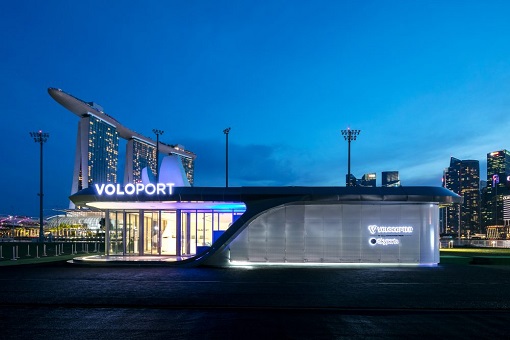
However, the VoloPort is still a prototype that was built up for the Intelligent Transport System (ITS) World Congress 2019, a transport technology conference which runs from Oct. 21 to 25 in Singapore. The VoloPort, which has a central pad from which air taxis will lift off and land vertically, has a modular design which can be adapted to fit rooftops, railway stations, parking lots, and other metropolitan locations.
Based in London, United Kingdom, Skyports has identified a number of potential VoloPort locations and air taxi routes across Singapore, including Changi, Sentosa and Seletar and of course, Marina Bay. The first public trial of the flying vehicle using a Volocopter 2X vehicle was being held on Tuesday (Oct 22) where it flew for 3-minute.
The Volocopter 2X can be flown by a pilot with a joystick, or remotely from the ground. At maximum speed, the Volocopter can travel at 110km-per-hour and carry 200kg, or two passengers and their luggage. If everything goes according to the plan, commercial flying taxis could take off in Singapore as early as 2021. The other contender for Volocopter’s commercial debut is Dubai.
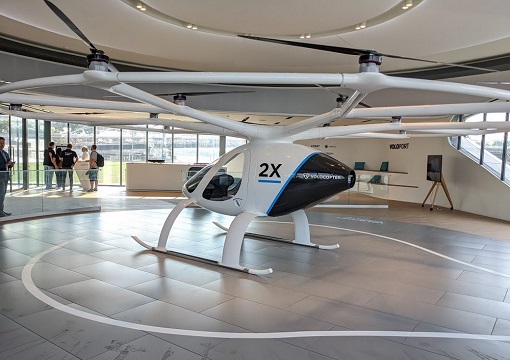
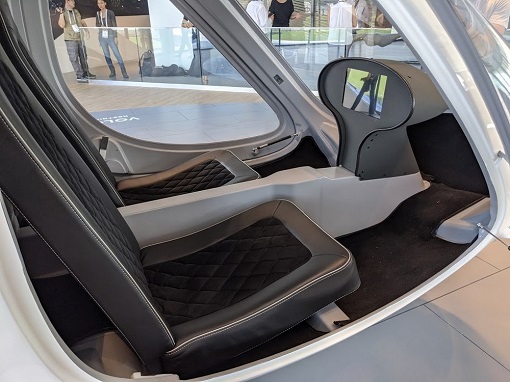
But a more promising flying car comes from another German start-up – Lilium. Unlike Volocopter 2X, which could carry 2 passengers, Lilium could take up to five passengers. On Tuesday (Oct 22), Lilium Jet announced the completion of the first phase of testing on its five-seater flying car, a progress that could make the launching of commercial flights by 2025 close.
Unlike Volocopter, Lilium is in the race to build flying electric vehicles that can transport people between different cities or regions more cheaply than a commercial airline. Its ultimate goal is to launch a flying taxi service between cities or regions that are up to 200 miles (321 kilometres) apart – with a fully functioning electric jet that can hit a top speed of 300km (190 miles) per hour.
Lilium said as a start, it plans to take New Yorkers from Manhattan to JFK Airport within six minutes for about US$70. Its first phase of testing in Munich, Germany, has shown that the prototype jet can transition from vertical take-off into forward flight, and hit speeds of 100km (62 miles) per hour. The prototype Lilium Jet is an oval-shaped body which can hold up to 5 passengers.
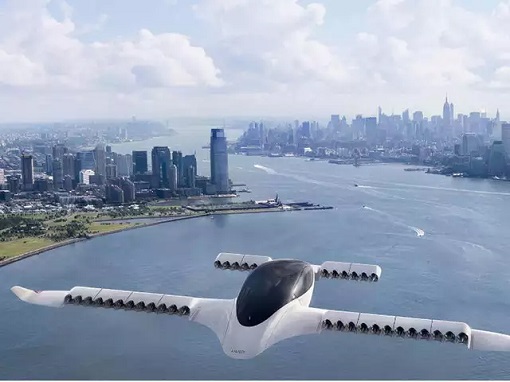
There are four wings in total at the front and the back, affixed with 12 flaps. These carry 36 electric jet engines, and tilt into different positions to allow the jet to take off or move forward. Off-the-shelf batteries sit in the body, beneath the main cabin. It doesn’t come with a tail, rudder, propellers or gearbox.
But it will take some time before city-dwellers can jump into a Lilium Jet and take US$70 rides to a nearby city. First, the start-up has to obtain regulatory approval to certify the Lilium Jet from Europe’s EASA (European Union Aviation Safety Agency) and the US Civil Aviation Authority. This process alone will take years, as the vehicle will have to meet certain safety and “airworthiness” standards.
To meet the regulatory expectations, Lilium has hired former Airbus logistics SVP Yves Yemsi as its chief program and procurement officer, and has poached truckloads of employees from the aviation giant. Another challenge is to prove its flying machine can safely ferry humans or real passengers from one city to another.
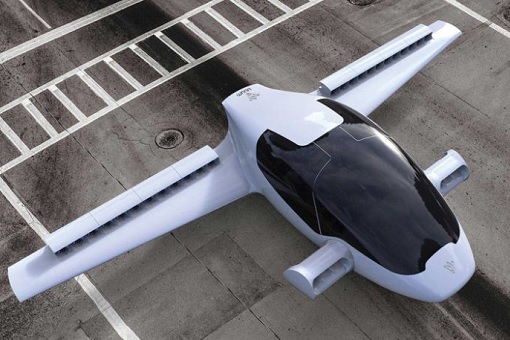
As a sign of its commitment and confidence, Lilium has gone to the stage of production where the firm has opened a new 3,000-square meter factory by its Munich headquarters, and plans to build a new facility on the same site. The management said it will help the firm build “hundreds” of jets a year by the time its air taxi service launches.
The biggest challenge is still funding – lots of money – to see through the regulatory and testing process. Lilium is currently talking with investors to raise a new fresh of funds of between US$400 million and US$500 million. The company has so far raised about US$100 million to date from backers, including China’s Tencent and the London-based venture capital firm Atomico.
Atomico was founded by Skype co-founder Niklas Zennström while tech giant Tencent owned China’s largest messaging app WeChat. It would be the biggest fundraising to date for flying taxis if Lilium could convince investors – both existing and new – to pump in half a billion dollar for its next phase of building and testing fleets of aircrafts.
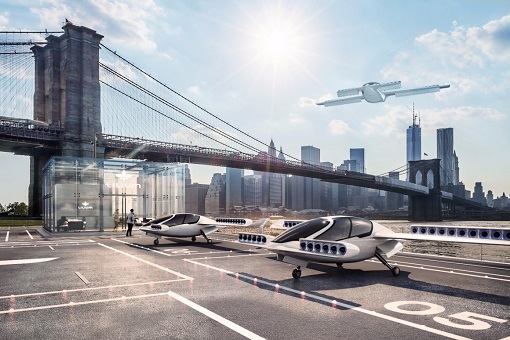
Lilium’s selling point is this – it’s designing a small jet aircraft, and not mimicking drones or helicopters (as in the case of Volocopter, a start-up backed by Intel and Daimler). Still, Lilium has to compete with competitors with well-funded players like Boeing and Uber. Uber has announced it will launch its flying taxi service in Australia by 2023, although it’s craft will travel a shorter distance than Lilium.
Other Articles That May Interest You …
- Uber’s New Business Model – Owning 24,000 Volvo Self-Driving Taxis In 2019
- 80% Cheaper To Take Robo-Taxi – The Next Car You Buy Could Be Your Last
- Finally, Saudi Women Can Drive – Only Because They’re Needed To Boost Economy
- Meet Billionaire Stephen Hung, Who Ordered 30 Rolls-Royces But Now In Huge Debt
- Here’re 7 Flying Car Projects That Could Make “Back To The Future” A Reality
- Security Guards In China – You Don’t Pay, We Lift Your Car Onto Roof!!
- VW To Produce Its 1960s Iconic Microbus – All Electric – In 2022 (Photos)Add
- Forget Driverless-Car, Singapore & Dubai Are Racing For “Flying-Taxi”
- You Kicked Me, I Chewed Your VW Jetta – A Dog’s Sweet Revenge

|
|
October 23rd, 2019 by financetwitter
|


|

|

|

|

|

|




























Comments
Add your comment now.
Leave a Reply